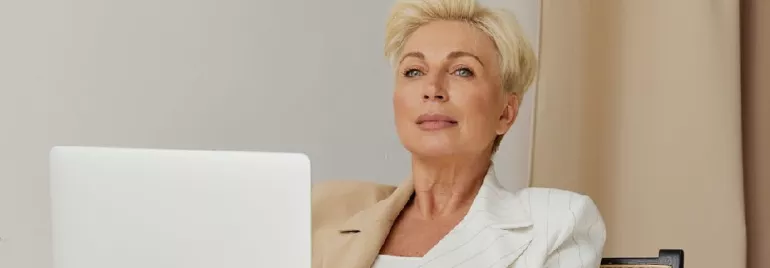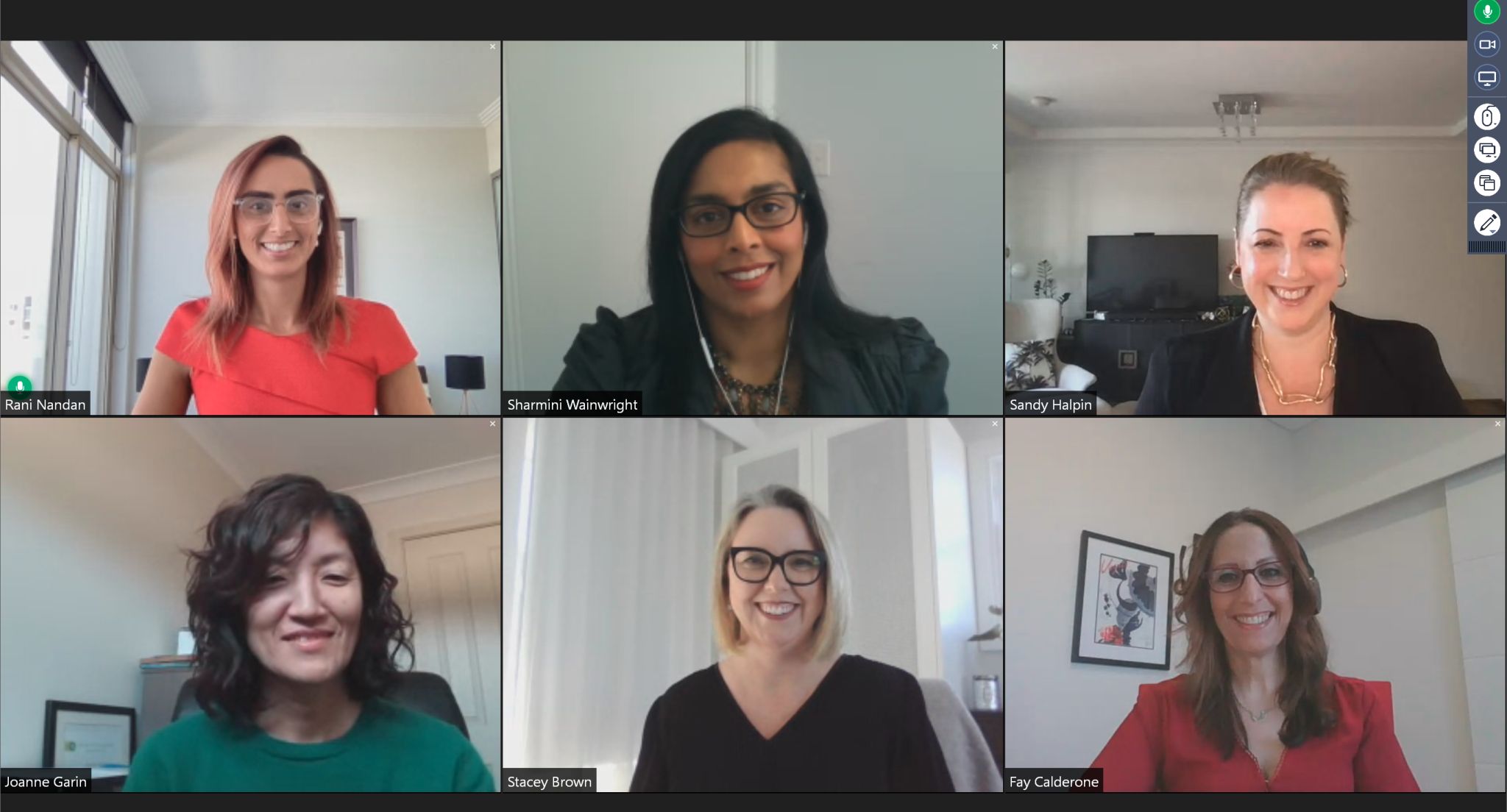Confidence, influence and loving your job: Stories from female leaders



As organisations around Australia continue to find new ways to promote gender equality and achieve equal representation, women in leadership roles are continuing to find ways to seize opportunities and be a catalyst for change.
PageGroup recently hosted its webinar, “Choosing to Lead… A Revolution”, part two of its Women in Leadership series aimed at amplifying the impact of female leadership in Australia and pave an easier way for the next generation in their careers.
The seasoned panel members featured Sandy Halpin, Executive Performance Coach at Capital Idea, Fay Calderone, Partner at Hall & Wilcox, Stacey Brown, CFO at Laser Clinics Australia, and Joanne Garin, General Manager – Finance, Greencross Pet Wellness Company. The discussion was moderated by Rani Nandan, Diversity & Inclusion Director APAC at PageGroup.
The webinar discussion addressed the following personal and professional development topics of:

To set the scene, attendees took part in two live polls.
Poll 1: Female leaders were asked, which of the following is likely to have the greatest impact on your engagement in your role
Poll 2: Female leaders were asked, what is currently the most important factor for you in your career journey?
Sharmini Wainwright, Senior Managing Director of NSW & QLD at PageGroup said it was important for current and emerging leaders to mark out the time to invest in their careers and leadership development.
“At PageGroup, we remain passionate about pushing for progress in this area,” Wainwright shared.
“Corporate Australia has continued to make big leaps in the representation and advancement of females, however there is a long way to go. Our panel discussion seeks to provide inspiration to take action with intention, and to also make the path easier for the next generation of female talent in your spheres of influence.”
Poll 3: Female leaders were asked, which sources of support have you leveraged so far in your career?
Nandan highlighted that more women in both senior roles and leadership roles should identify sponsor opportunities in their organisation, which were underutilised according to the poll results.
“Most of us don’t consider sponsors. Who can advocate on your behalf inside the business, who can promote you when you’re not in the room? Who can open doors for you and enable you to have access to particular projects or introduce you to other important stakeholders?” Nandan shared.
“That’s where the sponsor relationship can come to life – and there’s an opportunity for us to be someone’s sponsor as well.”
Brown, who has had mentors and used professional coaches, revealed that having a sponsor made the biggest impact on her career.
“Mentors and coaches have been great for those targeted questions that you want answered or need assistance to think through. They’ve been highly useful from that perspective,” Brown said.
“But my sponsor introduced me to other roles – he knew me, my skill set and my strengths – and he was someone I could keep going back to and use as a sounding board, like helping me through the process of leaving NewsCorp after 20 years.
“Identifying where you can give back is important too. Mentoring and sponsoring others, opening doors, and connecting people is always a two-way street.”

Using the services of a career coach, or executive coach for professionals in the C-suite, is another avenue that female leaders can go down, to meet the challenge of leading a revolution. Coaches can identify personal goals, develop leadership skills and plan or help strategise career moves, and ultimately help women leaders succeed and achieve their goals in the workplace.
Garin shared that working with a coach was the most instrumental decision for her career decision-making.
“It allowed things to be a lot clearer around what I wanted to do by working through it with a coach. What is my purpose? Why do I get up every day? I feel like I would never have gotten there without someone asking those probing questions,” Garin revealed.
“But it also became about taking time out of my day job to think about myself for an hour at a time. It was developing my own self-awareness so when I went into interviews, I could confidently articulate the value of what I would bring to an organisation.”
Halpin, an executive coach herself, noted that while coaching has the potential to create profound changes, it is dependent on the dynamics of the relationship between the coach and client.
“Not everyone is the right coach for each person and every professional is not at a point where they are open to being coached. If you really want to see transformation and growth, the conversations in a coached environment need to be quite open and can be quite confronting and challenging,” she said.
“It might just mean it’s not the right time for you, as you need to be committed to the process and committed to the change, otherwise you will spend a lot of time dancing around the subject and it won’t be productive for either of you at the end.”
Garin added that the coach she used had a finance background, which was an advantage in their dynamic.
“She had real context to the types of pressures we have in these roles. Being familiar with the environment meant it was easier for her to understand my problems,” she said.
Wainwright said coaching was about utilising a great tool to get a different perspective, to find blind spots, and to spot the elephant in the room that you’ve not been able to see.
“There are also certain ‘seasons’ in your career where coaching will be more applicable than others. It is worth pursuing,” she said.

Despite the significant progress made towards gender equality, gender gaps are still prevent in Australian workplaces. Amid this slow pace of change for gender equality, gender equity, equal participation and representation, and creating more inclusive workplaces, women in leadership roles are challenged by the lack of support in developing the skill sets needed to successfully lead teams, departments and organisations.
A missing factor in women’s leadership is confidence.
Nandan said many women struggled with backing themselves and taking their confidence to the next level. Brown provided her advice for finding confidence when having difficult conversations.
“At school, I was the person who didn’t speak up, but you do gain confidence through practice, so I’d encourage you to practice having those conversations,” she said.
“At Qantas, I was taught very good, basic skills of SBI: situation, behaviour, impact. When you keep it factual and remove the emotion, then practice it in the mirror or with your partner or friend, you’ll become much confident in the content. Putting in the time and effort always pays off.”
Calderone agreed and shared her experience in the legal profession, working with employees from diverse backgrounds.
“Some of the smartest lawyers and hardest-working team members I’ve worked with have come from some form of adversity or have not come from privilege. I think that comes from building your resilience and grit,” she said.
Summarising what she typically sees from the clients she coaches, Halpin believes two factors are holding women back from feeling confident and empowered, and therefore not achieving the career progression they sought.
“Clarity – to who they are, what they stand for, the value they bring to a business or situation. Women typically see the gaps; men typically see the skill. Women see the deficiencies, which may only be one or two, compared to all the strengths and capability we have. It’s not a negative for women but rather an opportunity to grow,” she revealed.
“The second one is influence. I often see women fail to connect the dots between relationship and performance to be able to leverage their influence currency and create the impact they want to achieve.”
RELATED: Finding your voice at the table: Women in Leadership series
For many current and upcoming female leaders in Australia, the career path has typically been one-sided where they are often giving a lot of themselves to the organisation. Therefore, an often-overlooked factor for women becoming more effective leaders is to ask their employers what the business can do in return.
“We tend to forget what we’re getting from our jobs in return. It’s [one of the taps that] fill you cup back up. I think about jobs now like dating. It’s a two-way street. You’ve got to get something and the company has got to get something. When it’s no longer two-way that’s when you realise you need to go somewhere else,” Garin noted, adding how this ultimately helps to empower women in their organisation.
“Women work really hard – it’s always giving, giving, giving but then you reach a point where you ask is my role challenging? Am I learning? Am I being stretched? Am I getting my own development? So when this role came up at GreenCross, I was very clear about what I wanted to get out of it and also what I wanted to learn from a commercial aspect.”
Brown offered her experience when she was asked to come back to NewCorp by the CFO.
“It was probably the first time in my career where I was pretty direct – I’m going to give you my knowledge and skill sets, but in return I would like to be considered for CFO in my career trajectory,” she said.
Nandan added: “I’m a massive advocate of: If you don’t ask, you don’t get.”
“Let go of perfectionism, adopt a growth mindset and learn from your mistakes. ‘Sometimes we win, sometimes we learn’. ‘Fear killed more dreams than failure ever will.’ I know these sayings sound cliché at times, but they are quite instrumental. We need to get out of our own way and that’s what I’m encouraging my team to do.” Fay Calderone, Hall & Wilcox
“Be comfortable with being uncomfortable. I don’t think you realise until later, the personal development you get through opportunities that stretch you both personally and professionally. Moving to another country and learning a different language really changed me. Put yourself out there and try something that you think might be a little hard, because you will end up learning so much along the way.” Joanne Garin, Greencross Pet Wellness Company
“Know who you are, what you stand for, what your point of view is, knowing what you really love doing and not just what you’re good at, and being unapologetic for who you are standing in your space. You can still admire someone but not follow them – make sure you’re owning your own space and owning who you are.” Sandy Halpin, Capital Idea
“I didn’t take enough risks in my career earlier on. When I look back, I spent a lot of time working really hard, but I think you’ve got to also find the fun in what you’re doing – that’s why you wake up and go to work every day. I should’ve started sooner.” Stacey Brown, Laser Clinics Australia
RELATED: Leading Women: Finding confidence through vulnerability
If you are an employer and would like to discuss your hiring needs, fill in the form below and we will call you back.